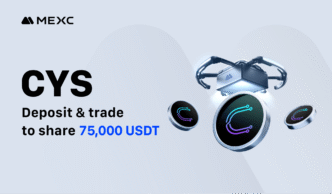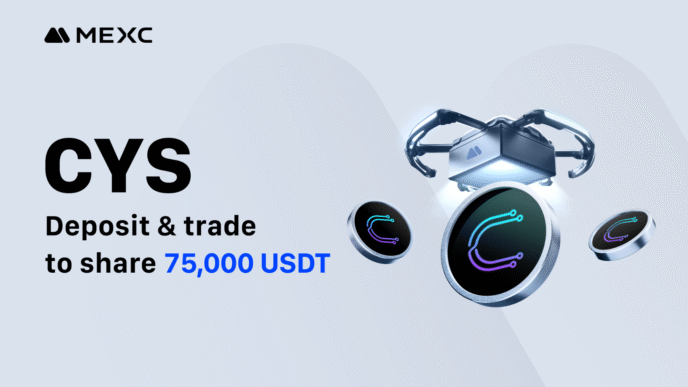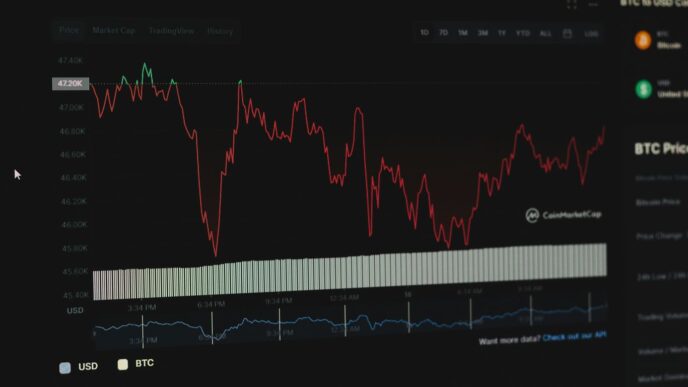Money20/20 Europe 2025 is almost here, and it’s looking like one of the year’s biggest fintech events. Every year, this conference in Amsterdam brings together people from all over the financial world—banks, startups, tech companies, and everyone in between. Whether you’re interested in payments, digital currencies, AI, or just want to see what’s new, there’s something for everyone. If you’re thinking about going or just want to know what’s trending in fintech, here’s what you can expect at Money20/20 Europe 2025.
Key Takeaways
- Account-to-account payments and borderless solutions are getting more attention than ever.
- Open banking is spreading fast, but there are still some big questions around rules and trust.
- AI is changing everything from customer service to fraud prevention, but there are concerns about bias and privacy.
- Digital currencies, including CBDCs, are a hot topic, but regulation is still catching up.
- Networking and real-time data tools at the event make it a great place to meet new partners and learn about the latest fraud prevention strategies.
Emerging Innovations in Payments at Money20/20 Europe 2025
Account-to-Account Payment Advancements
A2A (account-to-account) payments continue to grab the spotlight in Europe. Banks and fintech firms are steadily pushing for faster, cheaper ways to move money straight from one account to another, sidestepping card networks entirely. This year, attendees will see:
- Widespread rollout of instant A2A transfers, even for larger ticket sizes.
- Use of virtual IBANs, which are becoming a popular tool for making payment collection smoother, as described by recent trends in the fintech investment landscape.
- Integration with e-commerce checkouts, making A2A a real choice for online shoppers.
The most interesting part from a customer view? You could be paying your rent, splitting a dinner bill, or shopping online without ever touching your debit or credit card. There’s still a bit of friction, but everything is moving toward one-click—and often zero-fee—transfers.
Cross-Border and Borderless Solutions
Sending money between countries has always been a headache, but this year, borderless payments are turning a corner. The discussion at Money20/20 is moving past just low-cost international transfers; now it’s about:
- Unified payment rails covering Europe and beyond
- Real-time currency conversion at checkout
- Easier compliance and anti-fraud tools across borders
Here’s how some of the top changes are stacking up:
| Feature | Old Way | 2025 Trend |
|---|---|---|
| Speed | 1-3 days | Seconds |
| FX Transparency | Poor | Clear pricing |
| Manual Paperwork | Yes | Mostly automated |
| Supported Currencies | Limited | 150+ |
This helps businesses, freelancers, and even average folks who just want to send money home or pay for something abroad without those weird charges popping up.
Inclusion and Sustainability in Payments
The payments landscape isn’t all about speed. There’s a lot of buzz about making sure solutions are reaching more people and having less impact on the planet. You’ll hear about:
- Tools that cater to people without traditional bank accounts
- Payment platforms built with eco-friendly tech or carbon tracking
- Business models where fair access isn’t just a bonus, it’s required
A few trends are getting special attention:
- Green payment cards—using recycled materials, or offering carbon-offset features.
- Low-data options for rural or low-bandwidth markets (think SMS payments).
- Community pilots that actually measure if people’s lives are improving, not just shifting digital dollars around.
If you want a sense of what banking might feel like for everyone—city, village, or on the move—Money20/20’s payments innovations sessions in 2025 are going to be the place to watch.
The Rise of Open Banking and API Standardization
Global Adoption and Regulatory Outlook
Open Banking keeps showing up everywhere now. In the last few years, more countries have rolled out rules to force—or at least really encourage—banks to open up access to customer data (with consent, of course). The idea is pretty simple: banks have to let safe, trusted third-party apps plug into their systems, so regular folks can move their money around or use new services. This push for regulatory alignment has taken off, especially in emerging markets. Here’s a quick look at the progress:
| Region | Open Banking Adoption | Key Regulatory Bodies |
|---|---|---|
| UK/EU | High | FCA, EBA |
| North America | Moderate/Increasing | CFPB (US), OSFI (Canada) |
| Asia Pacific | Moderate | MAS (Singapore), HKMA |
| LatAm/Africa | Growing | Central Banks, Fintech groups |
By sharing data, new banking apps are giving customers better tools and control. Conferences like Money20/20 highlight how future banking apps will get even more user-friendly as a result.
Improving Consumer Trust and Security
Letting outside apps access your bank records sounds a little nerve-wracking. That’s why building trust and strong security measures is such a big focus. Right now, banks, fintech firms, and regulators are all stressing these points:
- Mandatory customer consent for any data movement
- Transparent disclosures—who gets which data, and why
- Frequent security audits and clear handling of breaches
Basically, if users don’t feel safe, they won’t use these services—so the pressure is on to make everything as airtight as possible. Vendors are pitching strong encryption and multi-factor logins to help keep things private.
Challenges in API Integration
Standardizing all these connections (called APIs) isn’t as easy as it sounds. Every bank still sort of does things their own way. This ends up causing some growing pains, even as everybody scrambles to play nice:
- Different formats and specs across banks slow down app building.
- Fintechs spend lots of time just mapping out inconsistent data.
- Updates to regulations mean IT teams have to tweak code, sometimes with very little warning.
Despite the headaches, nobody’s turning back—the pressure to join up fintechs and banks is only growing. The hope is that, as API standards mature, the industry can stop worrying about plumbing and focus more on new features.
Artificial Intelligence Transforming Fintech

AI isn’t new to finance, but it’s moving fast, and this year’s Money20/20 Europe is a great place to get a look at what’s actually changing. You’re going to hear a lot about practical uses—beyond chatbots—like smarter fraud detection, tailored financial products, and the real details of keeping people’s data safe.
AI-Driven Personalization and Engagement
Every bank and fintech startup is racing to make your experience feel more personal. It’s not just about remembering your name or spending habits anymore. Here’s what’s going on:
- Real-time recommendations that pop up as you shop or pay bills.
- Custom budgeting tools that learn from your actions.
- Messaging bots that answer your questions 24/7—but sound less like robots every year.
AI in fintech is now focused on making sure people don’t feel like just another number. Companies are showing off how their tools help people save money, avoid late fees, and even spot chances to invest. If you want a taste of what fintech firms are building, you can find deep industry updates at TechBullion.
Fraud Detection and Prevention Strategies
Banks are still obsessed with keeping out the bad guys—and for good reason. Fraud hits hard, especially as so much of our money moves online. Here’s a quick table showing why AI matters in fraud prevention:
| Attack Type | Detection Speed Before AI | Detection Speed Now |
|---|---|---|
| Card Cloning | Days | Minutes |
| Phishing Attempts | Hours | Seconds |
| Fake Account Opens | Days | Real-time |
- Modern AI catches patterns humans would miss.
- Alerts happen faster, sometimes before money even leaves your account.
- These controls matter for big banks and tiny fintech apps alike.
Addressing Algorithmic Bias and Customer Trust
AI’s got a problem—it’s only as fair as the data it learns from. That can mean some people get turned down for loans or flagged as risky just because the algorithm is outdated or skewed. Money20/20 speakers are talking about:
- Regular audits of their AI models for bias.
- Making it easier for customers to understand how decisions are made.
- Ways to appeal or challenge an AI-driven decision if it feels off.
No system is perfect. By 2025, fintech companies know they can’t just show off shiny new tech—they’ve got to prove they’re fair, too. This trust is where a lot of the future competition will happen.
That’s what’s on the menu for AI in fintech at Money20/20 Europe 2025. Everyone’s watching to see which solutions actually stick, which ones flop, and how the industry will handle the risks and rewards of handing more decisions over to machines.
Digital Currencies and the Future of Money
Digital currencies aren’t just a trend—they’re breaking new ground at every turn. You’ll see real progress and a whole lot of debate about what their role should be at Money20/20 Europe 2025. It’s no longer just Bitcoin and a few crypto coins; the talk has shifted to government-backed versions, regulations, security, and practical tools for everyday use. Let’s get into the real details.
Central Bank Digital Currencies (CBDCs)
If you’ve followed finance news, you know central banks are working on their own digital versions of cash. Here are the main things that keep coming up:
- CBDCs might lower the cost of moving money between countries.
- Governments are pitching digital cash as a way to get more people into the formal economy.
- Countries are experimenting, but hardly anyone has totally rolled one out yet.
A table with where things stand as of today:
| Country | Pilot Stage | Fully Launched | Use Case Focus |
|---|---|---|---|
| Sweden (e-krona) | Yes | No | Domestic payments |
| China (e-CNY) | Yes | No | Retail, retail pilot |
| Bahamas (Sand $) | No | Yes | General payments |
| Eurozone | Yes | No | Evaluating options |
The chat often comes back to how these can work with existing money while keeping things safe from fraud. Check out more insights from recent commercial space travel advancements for how innovators handle complex rollouts in new tech.
Regulatory Hurdles and Security Measures
Honestly, regulation might be the trickiest part. There’s a mix of privacy concerns, what happens if a digital wallet gets hacked, and who is in charge if something goes wrong. Common worries at the conference include:
- Getting all banks on the same page about rules for digital cash.
- Protecting users from new kinds of scams or errors that didn’t come up with paper cash.
- Telling the difference between legal digital currencies and unregulated, risky projects.
Folks are still looking for the right answers here. We’ll likely see new GDPR-style rules for privacy, and maybe even some unexpected partnerships between governments and traditional banks.
Digital Currencies in Everyday Transactions
So, will you be buying your morning coffee with digital euros next year? Not quite yet, but we’re getting closer. Here’s what’s working and what isn’t in real life:
- Some small countries already let people pay with their own official digital currency at stores.
- Businesses like online shops are starting to list prices in digital coins.
- Many people are still unsure about security and whether digital cash will actually benefit them.
It’s one thing to make digital money work in a lab, but another to get everyone to use it every day. That’s the challenge—and the opportunity—people are buzzing about at Money20/20.
No matter where you stand, digital currencies are shaping how we’ll think about money years from now.
Responsible Finance and Financial Inclusion Trends
There’s a lot of talk at Money20/20 Europe 2025 about making finance work for everyone—not just those with easy access. A big focus this year is developing financial tools that actually reach and help underserved populations. The event will spotlight new approaches, tough questions, and real numbers about what’s working (and what isn’t).
Innovative Tools for Underserved Markets
It seems like every year there are more startups building tools for people who usually get left out. Here are some approaches folks will be talking about:
- Designing mobile-first banking apps for areas where smartphones are often the only way online.
- Community-driven lending platforms letting small, local groups pool resources for loans.
- Flexible ID solutions—some companies now use digital scans or alternative data, not just government IDs.
A key part of these projects isn’t just about shiny tech—it’s about practicality and trust. If people can’t use or don’t trust the tool, nothing gets better. Fintech’s push for greater inclusion proves this is a busy, changing corner of the industry.
Building Resilient Business Models
Let’s be honest—solutions that don’t last aren’t much help. Money20/20 Europe 2025 is hearing from founders and researchers who have tackled hard questions about sustainability:
- What keeps financial tools running when funding dries up?
- How do you keep serving people through local crises or tech outages?
- What’s the right balance between making revenue and serving a greater good?
Take a look at how some business models stack up when we look at real data:
| Model Type | Cost to User | Longevity (yrs avg) | Main Challenge |
|---|---|---|---|
| NGO-backed Platforms | Free-low | 2-3 | Ongoing funding |
| Fintech-for-profit | Low-moderate | 4-6 | User trust |
| Traditional Banks | Moderate-high | 7+ | Accessibility |
Measuring Impact and Outcomes
It’s easy for companies to advertise big claims around financial inclusion, but what’s actually changing for users? This section features talks on tracking clear results, not just making promises. Attendees are learning to look for:
- Independent studies that go beyond company-made stats.
- User-centered data—who is helped, and by how much?
- Ongoing feedback systems—not just a survey once, but regular check-ins with users.
A lot of speakers say the future has to be about real transparency. It’s not just about how many app downloads happen in a new market, but if people actually get a shot at better money management, access to credit, and financial dignity. These are the stories and numbers Money20/20 Europe is aiming to surface this year.
Networking and Business Development Opportunities
Nobody comes back from Money20/20 Europe without a story about meeting someone who changed their outlook. Whether you’re a startup founder, an established banker, or a curious newcomer, you’ll get a shot at building real connections here. Money20/20 isn’t just about technology—it’s about people finding new ways to work together.
Curated Content Tracks and Panels
The agenda is packed, but not in a random way. Sessions are grouped by themes, so if you’re big on AI, payments, or open banking, you’ll know exactly where to go. These tracks aren’t just talks—they’re a chance to meet others who care about the same ideas. For many, it’s the hallway chats after a thought-provoking panel where business cards actually come out.
- Themed tracks make it easier to find your crowd—whether you care about regulatory changes or next-gen fraud solutions
- Panels are interactive, so you can throw out questions or share your take with panelists
- Last year, the AI and inclusion tracks sparked some of the best debates, and this year promises the same focus
Partnership and Collaboration Highlights
Big players and plucky upstarts spend the week shoulder to shoulder. You might see CEOs leaning over laptops together or small tables buzzing with introductions. Some of the best deals start here. Here’s a quick look at types of collaborations that often emerge:
| Collaboration Type | Typical Outcomes |
|---|---|
| Tech Integrations | Joint product launches, APIs sharing |
| Investment Contacts | Funding follow-ups, pilot projects |
| Market Expansion | Cross-border partner agreements |
Everyone’s got something to partner on, whether that’s getting your company featured or figuring out a way to co-launch a product that covers new markets.
Connecting with Global Innovators
If you’ve ever felt like your network could use a global shake-up, this is the place. Attendees come from across the world, and it’s not just the big firms—there are lots of smaller, imaginative players too.
- Expect happy hours, roundtables, and meetups—these informal events often lead to the most surprising connections
- Don’t underestimate those spontaneous hallway conversations—they can lead to mentorships, joint ventures, or even your next job
- Bring your questions! The more you talk, the more you’ll get out of the experience
The real value comes from talking to someone outside your usual bubble and realizing there’s a lot more happening in fintech than you thought. And yes, there’s a good chance you’ll find yourself making plans with folks you just met over coffee, ready for the next bold idea.
Real-Time Data and Next-Gen Fraud Prevention
The focus on real-time data combined with the latest fraud prevention tactics is huge at Money20/20 Europe 2025. All across the conference, payments and fintech industry experts are getting into the weeds about data, analytics, and how to keep both customers and businesses safe.
Harnessing Real-Time Analytics
Real-time analytics isn’t just some buzzword—it’s turned into the core of how payment systems spot and block threats instantly. Banks, fintech startups, and payment service providers are:
- Watching transactions as they happen, not after the fact
- Spotting strange activity and stopping fraud before any real damage
- Adjusting risk scores on the fly, based on what’s happening now, not what happened last month
There’s a big push to move from "detect after the fact" to "stop it as it unfolds," and that’s making things safer for everyone.
Adaptive Security Technologies
Security tools have stepped up a notch with these new systems that basically learn as they go. Next-gen anti-fraud solutions are always updating—kind of like your favorite app, but with more at stake. Here’s how adaptive security is showing up at the conference:
- Continuous updates to rules and logic based on new patterns
- Automated responses to block potential threats in real time
- Self-improving models that can handle new fraud tactics almost as soon as they appear
These tools aren’t just set-it-and-forget-it; they’re more like security guards who pay closer attention over time.
Strategies for Combatting Cyber Threats
When it comes to fighting cyber threats, there’s no one-size-fits-all approach. The crowd at Money20/20 are sharing ideas that go beyond just the tech, including:
- Frequent staff training—people are still the first line of defense
- Multi-factor authentication built into payment journeys
- Better data sharing between banks and fintechs to stay ahead of the bad guys
Seriously, everyone seems to agree on this: you can have amazing tech, but without strong processes, it all falls flat. The biggest lesson? Fraud evolves quickly, and you need a plan that keeps up with the ever-changing legal compliance risks. The show’s message is clear—adapt or risk being left behind.
Wrapping Up: What Awaits at Money20/20 Europe 2025
So, that’s a quick look at what Money20/20 Europe 2025 has in store. If you’re into fintech, payments, or just curious about where money is headed, this event is kind of a big deal. There’s a lot happening—AI, open banking, digital currencies, and new ways to pay and get paid. The conference is packed with talks, panels, and plenty of chances to meet people who are shaping the future of finance. Whether you’re a regular or it’s your first time, you’ll probably walk away with new ideas and maybe even a few new contacts. Amsterdam in June isn’t a bad bonus, either. If you want to keep up with what’s next in fintech, this is the place to be.
Frequently Asked Questions
What is Money20/20 Europe and why is it important?
Money20/20 Europe is a major event where people in the finance and technology world come together to talk about new ideas, trends, and challenges. It’s important because it helps shape the future of money and payments by sharing knowledge and connecting leaders from all over the world.
What are some new payment trends discussed at the conference?
Experts at the conference talk about things like account-to-account payments, faster and safer ways to send money across countries, and making payments more fair and eco-friendly for everyone.
How is artificial intelligence (AI) changing the fintech industry?
AI is being used to make banking and payments more personal, help spot and stop fraud, and even give better financial advice. The conference covers how AI is used responsibly and how to make sure it’s fair for all customers.
What’s happening with digital currencies at Money20/20 Europe?
Digital currencies, like central bank digital money, are a big topic. Experts discuss how these new types of money can make payments easier, what rules are needed, and how safe they are for everyday use.
How does Money20/20 Europe help with networking and business growth?
The event has special sessions, panels, and tracks where people can meet, share ideas, and start new partnerships. It’s a great place to learn from global experts and find new business opportunities.
What steps are being taken to make finance more fair and safe for everyone?
Speakers talk about new tools to help people who don’t have easy access to banks, building strong and lasting business models, and using real-time data to stop fraud and keep people’s money safe.














